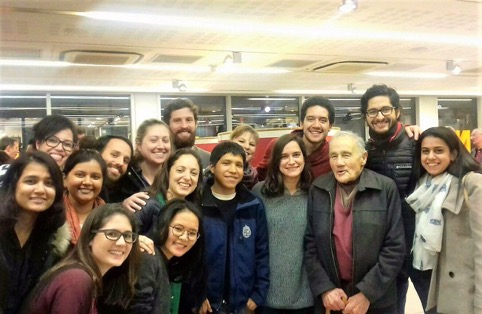
Industrialisation, a well-known
driver for rural to urban migration, creates the increased demand for housing
as a by-product of a swelling city. Emerging cities in developing nations,
lacking the capacity to respond to a rapidly increasing urban population tend
to become inundated with the enormous demand for housing, which poses a problem
with no immediate solution. A housing deficit left unaddressed gives rise to
the development of informal settlements by people perceived to be left with
limited options. In an effort to find their own solutions, settlers “illegally”
create unplanned neighbourhoods in areas not fit for development and deficient
of infrastructure and services.
In the case of Lima, rural migrants
who rushed to the city for employment and enterprise found themselves in
overcrowded and shabby ‘tugurios’. In the 1950’s, individuals
frustrated with forking out huge portions of their income for high-cost rent in
exchange for sub-standard living conditions formed community groups to plan
major land invasions in the hills surrounding the centre of Lima. The strong
networks formed by the invaders made it difficult for authorities to action any
form of evictions against them. The invasions took place around the same time
that John F. C. Turner, a British architect who had been closely examining
housing policy and programs in Lima, wrote his first report in 1959. The
government of Peru tried and successfully relocated some squatters to
government land. However, the invaders of El Ermitaño stood their ground
forcing authorities to develop strategies to take into account their needs
through slum-upgrading, rather than to resist the young settlement. Turner,
despite this, critiqued the implementation of these processes in his early
career, finding them to be insubstantial in addressing the dwelling needs of
the communities they were to service. The residents of El Ermitaño, with the
help of Turner’s advocacy, were granted legal tenure and were able to avoid
evictions and demand municipal services.
Dr. Katherin Golda-Pongratz, a German
architect who followed Turner’s work closely while completing her PhD in
Architecture in Peru, became interested in and is now referencing Turner’s
contribution to El Ermitaño in her own work. She gave an anecdote about how the
two have collaborated on the Spanish publication of the book Autoconstrucción which explores Turner’s 1948
writing. The book references Patrick Geddes’ pattern of relationships in the
“notation of life” which has influenced much of Turner’s philosophy. The book
will feature other articles written by John and translated in to Spanish
including an entry for the magazine Architecture and Design that was the
precursor to the film A Roof of
My Own.
Golda-Pongratz further explained how
the research process of completing Autoconstrucción led to the resurfacing of the 30 minute
documentary guest-edited by Turner in 1963 and released the following year by
the United Nations Centre for Building and Planning. The version originally
released to the public aired void of an integral address from then President
Fernando Belaúnde.
A Roof of My Own takes the viewer into the arena of the autonomy of housing
in the 1960’s. It highlights the political, social and personal discourses of
the time in the settlement of El Ermitaño in northern Lima and demonstrates how
ordinary people were managers of their own house construction. The case of El
Ermitaño underscores Turner’s concept that informal settlements are not to be
viewed as a problem but an opportunity to provide solutions to the problem of
housing.
In his introduction of the video,
Turner touched on the relevance of the film in today’s housing climate where
young professionals worldwide find themselves not earning enough to save for a
down payment on a home. They are instead forced to stay at home with their
parents or are caught in a vicious cycle of settling in expensive, sub-standard
housing which consumes most of their income, hindering their capacity to save.
He also stated that housing policies that aim to provide homes that the poor
cannot access is not a suitable to rectify a housing deficit.

Roof of My Own has inspired Golda-Pongratz to continue the legacy of
Turner’s work by creating a sequel to the film. She hopes to show her
continuation in the same community centre in El Ermitaño where the original
film was screened by the invaders. El Ermitaño is now considered an ‘arrival
city’ where Golda-Pongratz anticipates that the second chapter will provide a
link to the new generation of residents. The narrative will explore the
precarious living conditions of families living on the lomas, increasing the pressure and
encroaching on the fragile landscapes. The trailer for the new film asked
probing questions relating to the ‘limits to growth’, the role of land
traffickers in urban expansion as well as the role of the residents in
place-making and shaping the future of the El Ermitaño.
You can view the lecture here.
You can hear the lecture in the audio podcast here.
Monique Rose is an Architect and Chevening scholar from
Jamaica studying for a MSc in Environment and Sustainable Development. Her
research interests are in housing and disaster risk management in the Global
South. This year she has joined the UrbanArk Project team and will write her
dissertation on the relationship between urban planning and disaster.